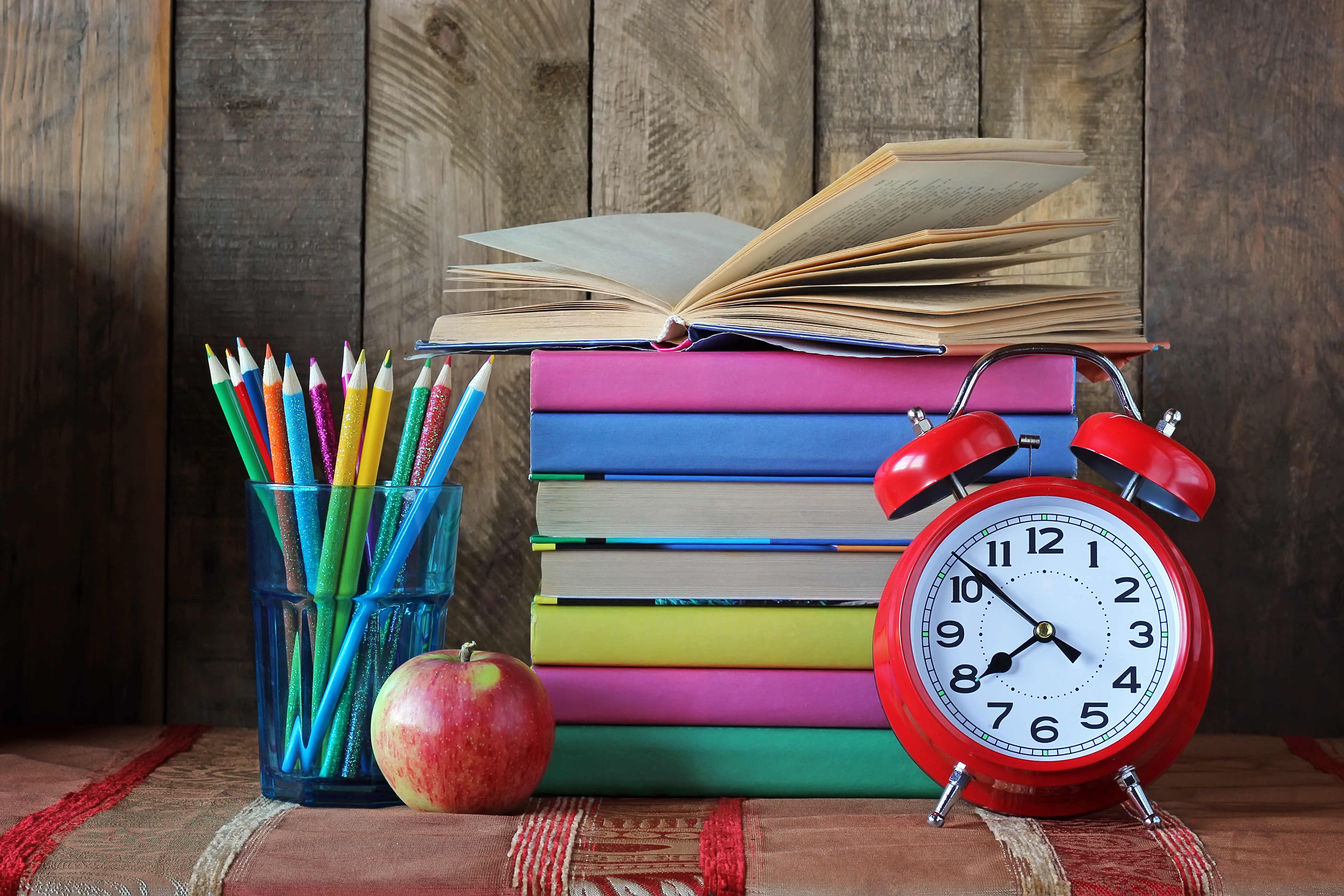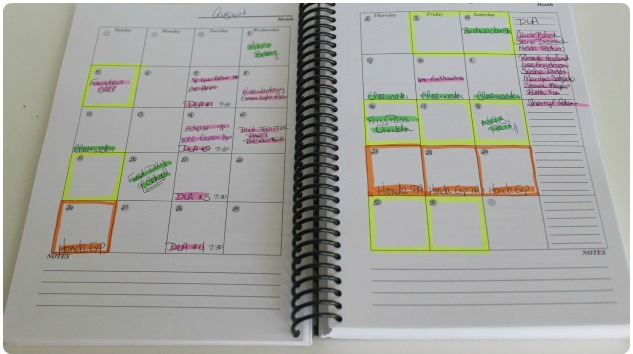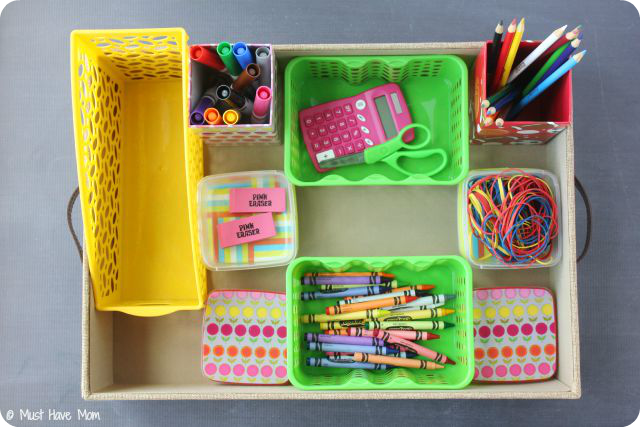Back To School Time Management Tips From The Pros
Back to school season is in full swing. From kindergarten to college, kids of all ages are brimming with potential as they gear up for a new school year.
Glancing at the news, there are all sorts of articles on how to prepare your child to head back to school. From easing into preschool to guides for middle school parents, high school supply lists to surviving your first year of college, there seems to be no shortage of advice offered to help you and your family make the transition from summer into the new school year.
As a parent gearing up to send my youngest off to Kindergarten (I also have one in 6th grade and one in 8th grade), all these articles got me thinking about one core piece I think most families could improve – time management. Luckily, I work with some serious time management pros, and we’ve put together a list of our best tips to help out with the back-to-school transition.
Calendars – Your Secret Time Management Weapon
Don’t worry, this isn’t a shameless self-promotion tactic. Calendars really are indispensable when it comes to time management, especially during transition periods like back-to-school season.
Calendars help us align our routines and schedules. They guide our weekly patterns and keep us informed of exceptions such as holidays and school breaks. And they provide a convenient place to keep track of everything, from short appointments to long vacations.
So how can you use your family calendar to improve your time management? We’ve got some useful tips to help you out.
Write It Down
To really make your calendar work for you and your family, you have to make sure all of your events make it on there. After all, a calendar is only useful if it is consistently maintained.
If you have a written calendar, set aside 10 minutes each week to make sure it’s kept up-to-date with all the events your family has going on. Don’t worry, you don’t have to go crazy and color-code every entry like my friend Lynsey does (unless that’s your thing, in which case, you should pat yourself on the back for being so organized).
You can also get the kids involved in planning out the family calendar by assigning tasks based on their age and ability. Younger kids can practice letter recognition and reading skills by finding the day of the week that corresponds with their soccer practice or upcoming school holidays as you add them to the calendar. Older children can practice their penmanship by adding their own extra-curricular events to the calendar. If you use a digital calendar system for your family, kids can still practice letter recognition on the screen or keyboarding skills instead of penmanship.
Balance Activities and Downtime
Kids need downtime just as much as adults. At school, their brains are engaged at a high level with learning, listening, and navigating social interactions. Make sure your daily schedule includes time for them to switch gears between activities, whether that’s from “school mode” to “home mode” or between playtime and homework time.
But, don’t forget that kids spend much of their time at school sitting at a desk, so it’s important to include physical activity in their schedules. The American Heart Association recommends children engage in at least 60 minutes of moderate to vigorous-intensity aerobic activity every day. Adults benefit from physical activity too, so schedule some family play time on your calendar. Pokemon Go is big with our team right now – many of us take our kids out to hunt Pokemon and get some exercise at the same time.
Improve Productivity During Focus Time
Is homework taking longer than you expected? Your child might be losing focus, becoming less productive in the process.
It’s not uncommon for us to see our kids multitasking while doing homework or chores around the house. In fact, we might not even realize it’s happening. Distractions such as a TV on in the background or the ding of incoming text messages from friends may not immediately jump out at us as a problem, but they can certainly impact a child’s ability to focus on the task at hand.
David Walsh Ph.D. explains, “When kids are multitasking, their brains are spending so much energy making quick decisions and responding to stimuli that they have fewer mental resources for comprehension and retention.”
For tasks that require concentration, eliminate distractions where possible. In our home, homework usually happens at the dining room table – a pretty high-traffic area in our house. To create an environment where our kids can focus, we’ve made it a house rule that whichever child finishes their homework first has to play quietly in their room while the other finishes up at the table.
Another tip – wherever your homework area is in your home, stock it ahead of time with the supplies your kids will need for their assignments. Not only will it help them stay focused on the task at hand, you’ll also shave a few minutes off homework time by eliminating the hunt around the house for an elusive glue stick or pencil sharpener.
Review The Calendar Each Night
Preparing for the upcoming day is a great way to make sure the entire family stays on track with their time management throughout the week. Review your calendar to see what’s coming next and take action to get ready for it.
If your child has soccer practice coming up, help them prepare by asking them to find their jersey and cleats the night before. Bonus: You’ll have time to run a quick load through the wash if they realize all their uniforms are dirty.
When reviewing the calendar, make sure you also look a few days ahead to see if any big assignments are due for your kids classes. Then you can use your nightly calendar review as an opportunity to check in on their progress.
Tip: With younger kids, try using pictures to represent different activities so they can visually identify upcoming events on the calendar. You can also use calendar time as a learning tool to practice numbers, days of the week, and months of the year.
Be Flexible With Your Routines
Pieces of routines start to fall into place as you look at what’s on the calendar for each day. If school ends at 3:30pm, perhaps that means in your house, homework time is from 3:45-5pm to allow you enough time to check work and answer questions before dinner. Or maybe the kids get to play right after school, and homework is saved for after dinner.
Whatever your family’s routine, try to keep outside events in line with it. When that’s not possible, be sure to plan extra time to make up for things that might be missed. For example, if afternoons are the normal homework time and your child gets a part in the school play with rehearsals after school, you’ll have to adjust your routine to find another time for homework to get done.
Adjust As You Go
Despite the best planning, things will happen that put you behind schedule. A child oversleeps and misses the bus, you forget the team snack and have to make an extra stop before the game, or something else. Don’t let small setbacks derail your routine – adjust and move forward, going with the flow as best as you can.
BUT – don’t forget to make a mental note so you can learn from any hiccups you run into. Use that information when you do your daily calendar review to create a plan with a little more wiggle room in the schedule if you need it.
Final Thoughts
Research tells us that kids respond well to routines and structure. Adults do as well. Your family calendar is a powerful tool to help you establish routines during the back-to-school transition. Use it wisely and you’ll set yourself up for success all throughout the school year.
Don´t forget to check our premium plugins for added calendar features!



